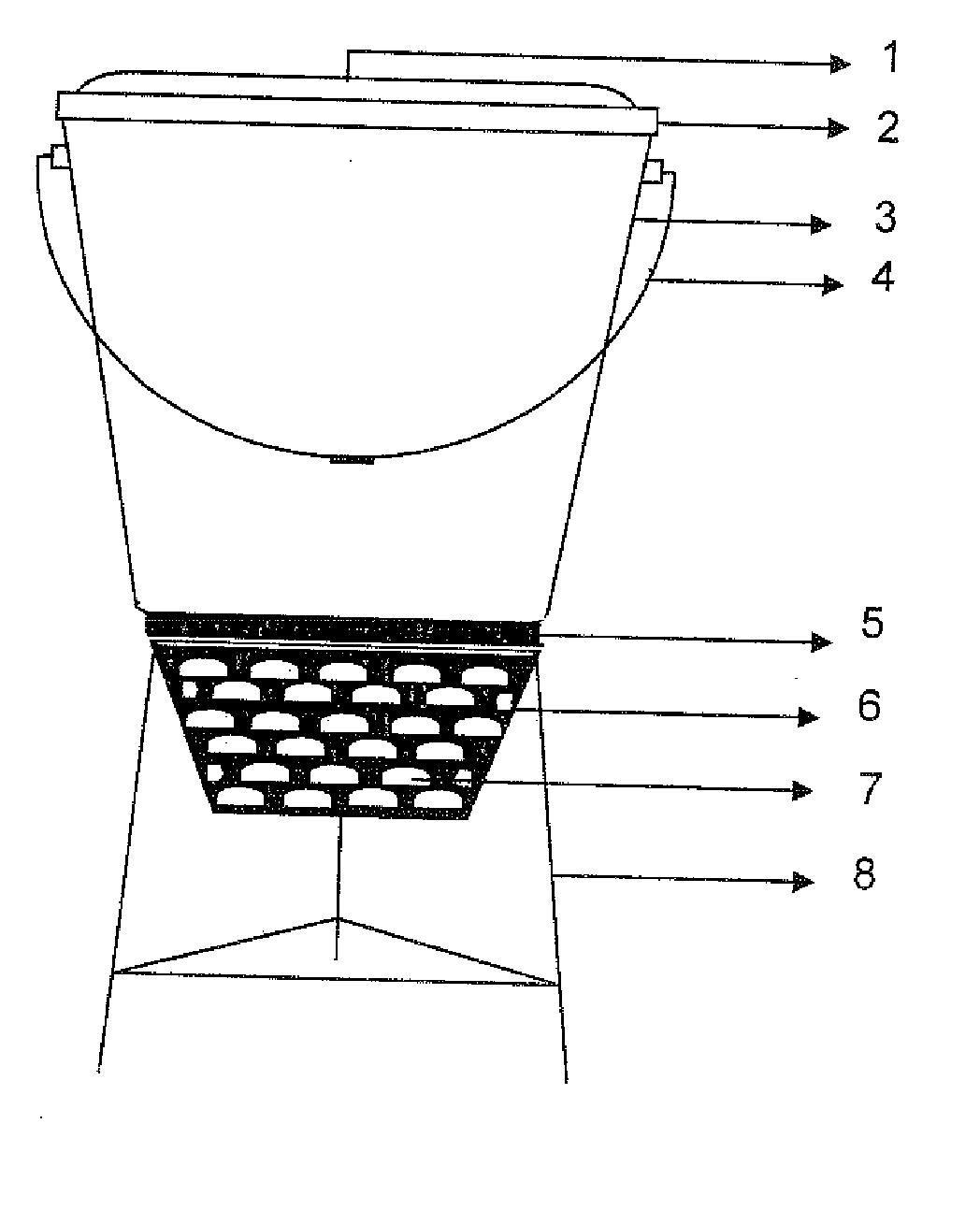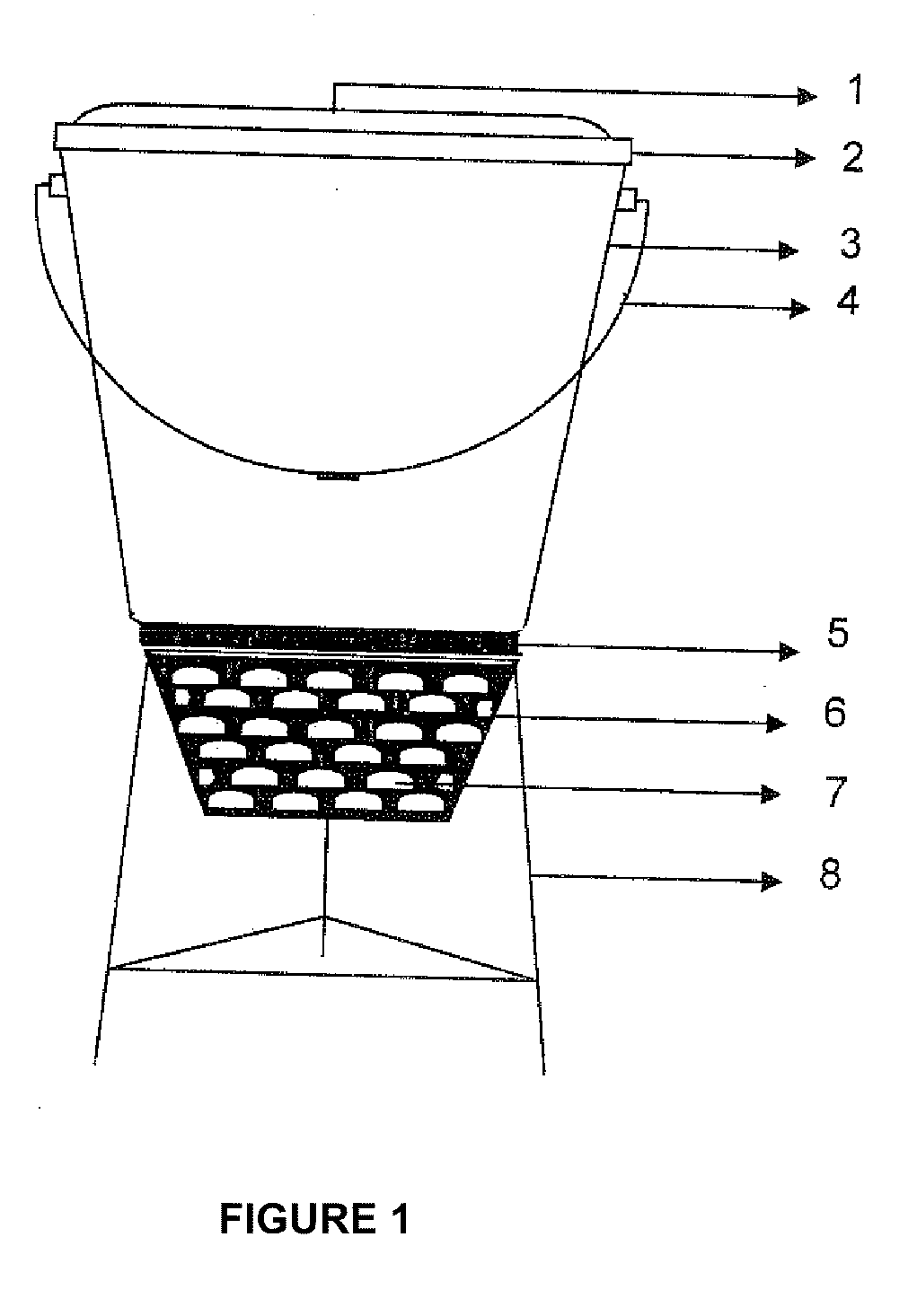A Device for the Storage and Treatment of Biodegradable Wet Solid Waste
a biodegradable, wet solid waste technology, applied in biomass after-treatment, products, specific use bioreactors/fermenters, etc., can solve the problems of difficult separation of individual components of commingled solid waste for effective treatment and processing, heterogeneous waste collected by these systems, etc., to achieve small space requirements, reduce total cost, and reduce the effect of land requirements
- Summary
- Abstract
- Description
- Claims
- Application Information
AI Technical Summary
Benefits of technology
Problems solved by technology
Method used
Image
Examples
example 1
[0074] A wet waste generated in a house generally consists of vegetable waste, fruit waste, left over cooked food, used or waste flowers, green leaves, spoiled food, vegetables and eatables. Such materials have been stored in the dust bin.
[0075] The wet waste stored in the bin has been tested for organoliftic test for bad odour. This test was conducted by a group of panelist and it was observed that the stored waste does not pose any foul odour; even it is stored for 7-30 days.
[0076] The experiment of storage of wet waste was conducted in all the three seasons viz., summer, rainy and winter seasons. It was observed that the bin works satisfactorily in all the seasons.
[0077] Experiments were also conducted for minimum and maximum period for the storage of wet waste. It was observed that the bin takes minimum 7 days and maximum 45 days for filling. The period mostly depends on the size of the bin and the quality and quantity of wet waste generated per day.
[0078] Experiments were c...
example 2
[0083] The bin was also used for storing the flower waste and it works nicely as above. To summarize, the novel design of the household dust bin for storage of biodegradable wet waste is very attractive and occupies very small area / space in the house. The total height of the bin is 78 to 80 cms and hence provides easy operation of the bin. One need not have to bend for opening the bin, putting waste in the bin and closing the bin. As the bin is capable of storing the waste for a longer period, a person need not have to go out for disposal of the waste every day. This saves the daily time spent on the disposal of waste. If the use of such bins is implemented in an area, then it will reduce the total cost incurred on collection, transportation and disposal. Such waste, which is rich in organic matter, if collected properly, can be processed effectively for the production of good manure. The novelty of the bin is that the wet waste can be stored for a longer period and it does not caus...
PUM
| Property | Measurement | Unit |
|---|---|---|
| size | aaaaa | aaaaa |
| size | aaaaa | aaaaa |
| height | aaaaa | aaaaa |
Abstract
Description
Claims
Application Information
 Login to View More
Login to View More - R&D
- Intellectual Property
- Life Sciences
- Materials
- Tech Scout
- Unparalleled Data Quality
- Higher Quality Content
- 60% Fewer Hallucinations
Browse by: Latest US Patents, China's latest patents, Technical Efficacy Thesaurus, Application Domain, Technology Topic, Popular Technical Reports.
© 2025 PatSnap. All rights reserved.Legal|Privacy policy|Modern Slavery Act Transparency Statement|Sitemap|About US| Contact US: help@patsnap.com


